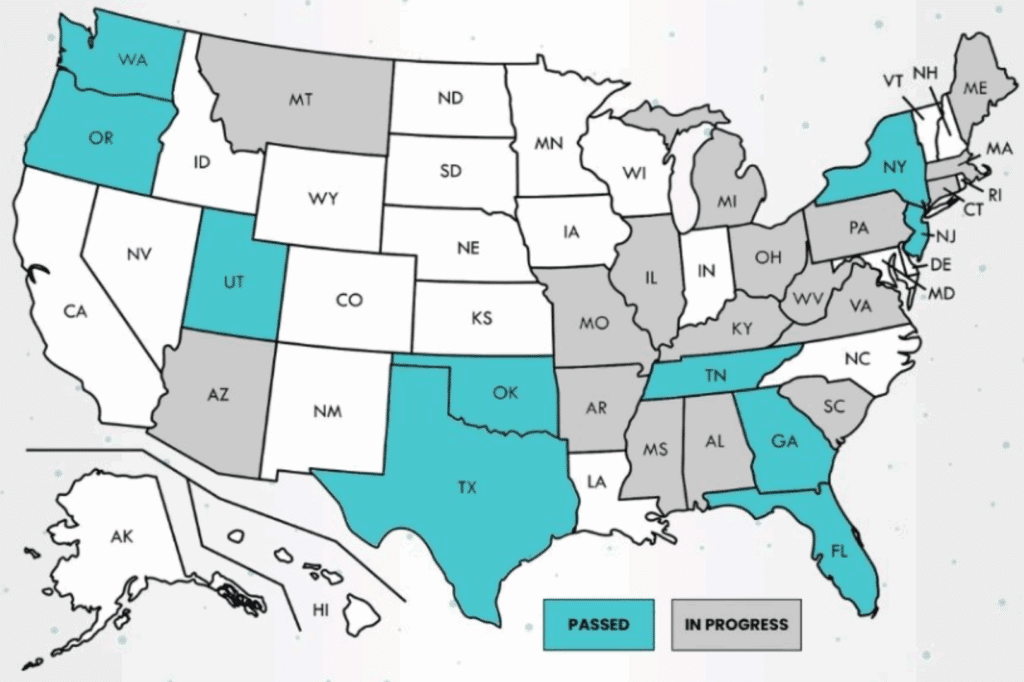Alyssa’s Law Compliance for Schools and Campuses
Silent Panic Alerts for Faster Emergency Response
What Is Alyssa’s Law?
Alyssa’s Law is legislation designed to improve emergency response times in schools by requiring the installation of silent panic alarms directly linked to local law enforcement. These alarms allow staff to immediately notify authorities in a crisis — such as an active shooter event — without alerting the perpetrator (Alyssas-Law.us).
The law is named in honor of Alyssa Alhadeff, a 14-year-old student who lost her life in the 2018 Parkland, Florida school shooting. Her mother, Lori Alhadeff, has since become a leading advocate for school safety reforms, championing this legislation nationwide (Make Our Schools Safe).
As of September 2025, Alyssa’s Law has been enacted in the following states:
New Jersey — Passed February 6, 2019
Florida — Passed June 30, 2020
New York — Passed June 23, 2022
Texas — Passed May 2023
Tennessee — Passed May 2023
Utah — Passed May 2024
Oklahoma — Passed June 14, 2024
Georgia — Passed April 2025
Washington — Passed May 2025
Oregon — Passed May 2025
States Where Alyssa’s Law Is in Progress
Legislation has been introduced or is under active consideration in:
Alabama
Mississippi (Pilot Program funded at $160,000 in May 2025)
Arizona (introduced by Representatives Hernandez, Chavez, Espinoza, Payne, Sierra)
Arkansas
Illinois
Kentucky
Maine
Massachusetts (bill scheduled for joint hearing September 18, 2025)
Michigan
Missouri
Nebraska (introduced by Senator Tony Vargas, LB1156)
Ohio
Pennsylvania
South Carolina
Virginia (introduced by Representative Timothy V. Anderson)
Requirements for Compliance
While exact provisions differ by state, most versions of Alyssa’s Law include:
Silent panic alarms in every elementary and secondary school building.
Direct linkage to local law enforcement or emergency services.
Immediate, silent notification to responders — without audible alarms inside the school.
Some states, such as Florida, have gone further by requiring mobile panic alert systems capable of real-time coordination across multiple first responder agencies (AlyssasLaw.us).
Why Alyssa’s Law Matters in K–12 Schools
For IT Directors and school leaders, Alyssa’s Law underscores the critical role of communication technology in life safety:
Faster notification means shorter response times during life-threatening events.
Silent alerts allow staff to act discreetly, without escalating a dangerous situation.
Compliance demonstrates a district’s commitment to proactive safety measures — reassuring parents, students, and the wider community.
How Ambit Solutions Helps Schools Comply
Ambit Solutions designs and integrates systems that align with Alyssa’s Law requirements and broader NG911 compliance initiatives.
Our solutions include:
Silent panic alarms integrated with local law enforcement.
Custom consulting to meet state-specific Alyssa’s Law mandates.
Unified platforms that also address Kari’s Law and Ray Baum’s Act.
With Ambit, schools don’t just check compliance boxes — they gain a comprehensive communication and safety framework built for the real-world demands of K–12 environments.
Additional Resources
For more information on related legislation and requirements:
Note: This webpage is intended for informational purposes and does not constitute legal advice. For specific legal guidance, please consult with a qualified attorney.
Not sure if your school is ready for Alyssa’s Law or other FCC mandates?
Schedule a Free 911 Compliance Audit
Ambit offers complimentary compliance audits to help K–12 districts evaluate and prepare.

